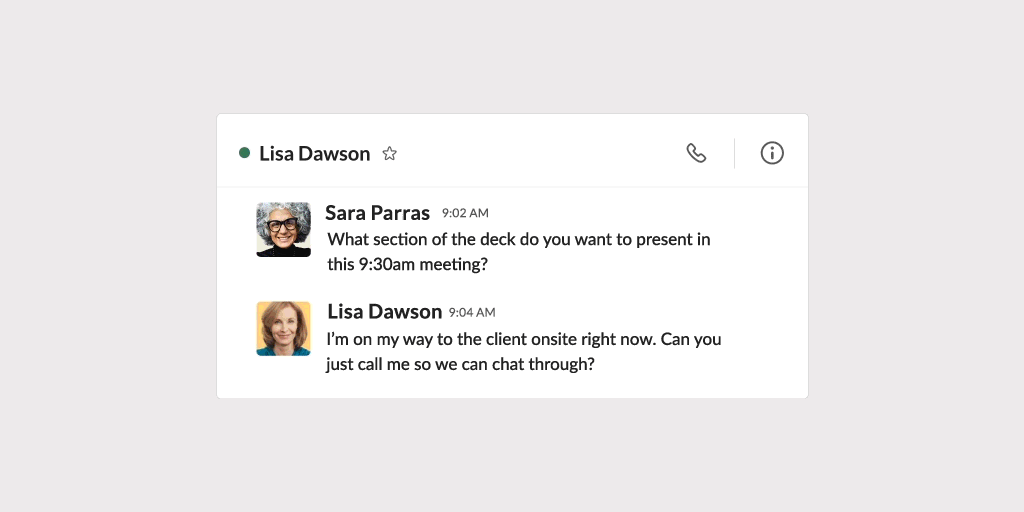While many people have made bold predictions on what the future of works will look like post-coronavirus, one thing is abundantly clear at this point — there is a new normal, and it largely revolves around using team collaboration applications and video meeting solutions to keep business flowing.
"If there has ever been a time to focus on communication and collaboration across the enterprise, this is it," Stewart Butterfield, Slack CEO, said during an Enterprise Connect Virtual keynote earlier this week (
available on demand).
But even with communications and collaboration being ever more important, Butterfield warned that working through a pandemic isn’t the same as working from home. All the normal rules are off, and working under these circumstances requires improvisational flexibility, he said. He put this point into sharp relief when he described his own home office setup: an attic space with a coaxial cable running out the window and down to a modem in the basement.
A Look Back, Forward at Slack
Following his opening remarks, Butterfield turned the conversation over to Tamar Yehoshua, chief product officer for Slack, and Brian Elliott, VP and GM of the Slack Platform, for a discussion of Slack’s latest product news —
the Microsoft Teams Calls app — and the company’s past and future.
With the new Teams Call app, available now, users are able to launch voice calls inside of Slack, Elliott said. VoIP phone integrations for Zoom, Cisco Jabber, RingCentral, and Dialpad, will follow, the company said.
With these sorts of integrations, Slack continues its efforts to make Slack appealing by allowing its users to find tools that would have normally be siloed, Elliott said. Instead of opening a Zoom meeting with a separate client, for example, users can join a meeting directly from a Slack integration. At launch six years ago, Slack had a handful of integrations, such as with Zendesk, Jira, and GitHub. Now, it has thousands of them, he said. Over time, Slack has "opened up its platform" more, and now offers over 2,000 APIs via its App Directory, he added.
As enterprises adjust to the new norm of remote working, they’re mostly taking advantage of three types of integrated tools, Elliott said. They are:
- Productivity tools — Everyday tasks like sharing documents, making calls, and scheduling meetings can all be done through Slack integrations, Elliott said. While these tasks are simple, enterprises might use different software to perform each task, Elliott went on to say. For example, an enterprise might have Google G Suite, Zoom, and Dropbox, and without Slack or another team collaboration app, users would have to switch between software. Elliott then shared how energy service provider World Fuel Services uses a combination of Slack and Zoom to communicate and collaborate – including the ability to make Zoom calls directly from the mobile Slack app.
- Specialized tools — Enterprises can integrate specialized tools like Salesforce for CRM, PagerDuty for IT incident response handling, and Workday for HR, into Slack, Elliott said. With the Salesforce integration, Slack users can receive custom notifications when a sales opportunity is updated. In terms of use cases, Elliott shared how Vodafone's DevOps team uses PagerDuty integration to escalate incidents to improve the uptime of its mobile app, while Overstock uses Workday integrations to request time off.
- Customization — Outside of the tools available in the App Directory, enterprises are able to develop customized apps using Slack’s open API, Elliott said. However, not every enterprise has developers on the task. That’s why Slack released the Workflow Builder last year, so teams can develop custom workflows with a visual, no-code approach, he said. HubSpot, for example, used Workflow Builder for an app that speeds up its onboarding process, and data warehouse provider Snowflake used the tool to build an automated survey tool integration.
Beyond integrations, Slack also has been focusing on addressing enterprises' security needs, Yehoshua shared during the keynote. Toward that end, Slack last year launched Enterprise Key Management (EKM), which allows enterprises to bring their own keys to encrypt data, he said. To address the security concerns of financial service customers, Slack released biometric authentication through its access control, which is now available for all users. Additionally, Slack is HIPAA, FINRA17a-4, and FedRAMP compliant, Yehoshua noted.
Embracing the New Norm
Outside of features and functionality, user training is another focus, Butterfield said.
"When we went public, we said 'your work is our work,'" he said. And now because of the coronavirus pandemic, that work is rapidly changing, he added. To get users up to speed on Slack, the company is providing a range of resources to train and get users used to the platform, Butterfield said.
In closing out the keynote, Butterfield made clear that this new way of working is a new norm for Slack as much as for its customers by showing two photos of Slack CMO Julie Liegl, working with her children in the background — one child happily playing with toy dinosaurs and another blocking a quarter of the camera. This new norm will take some time to get used to, but we are all in this together, Butterfield attested.










